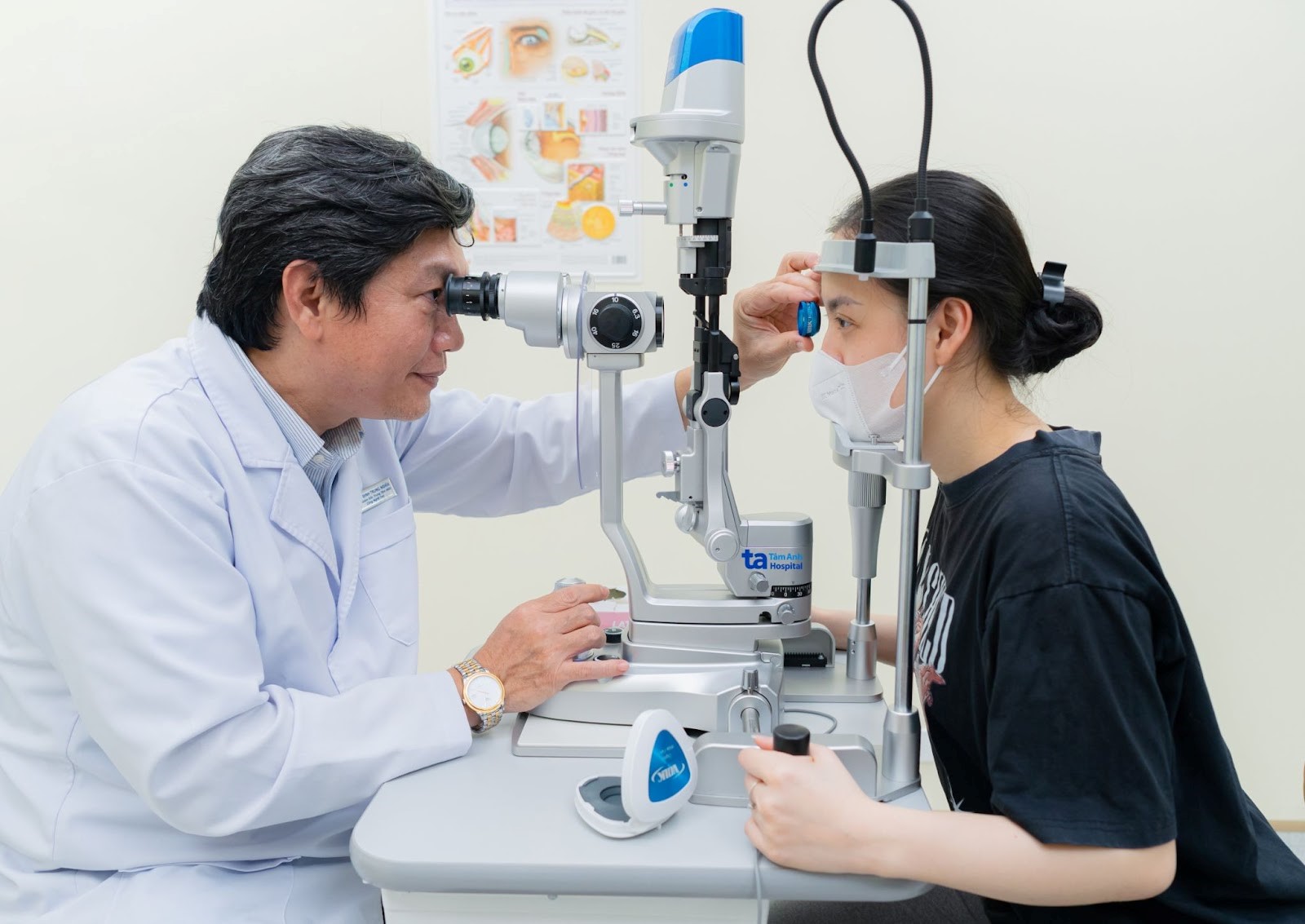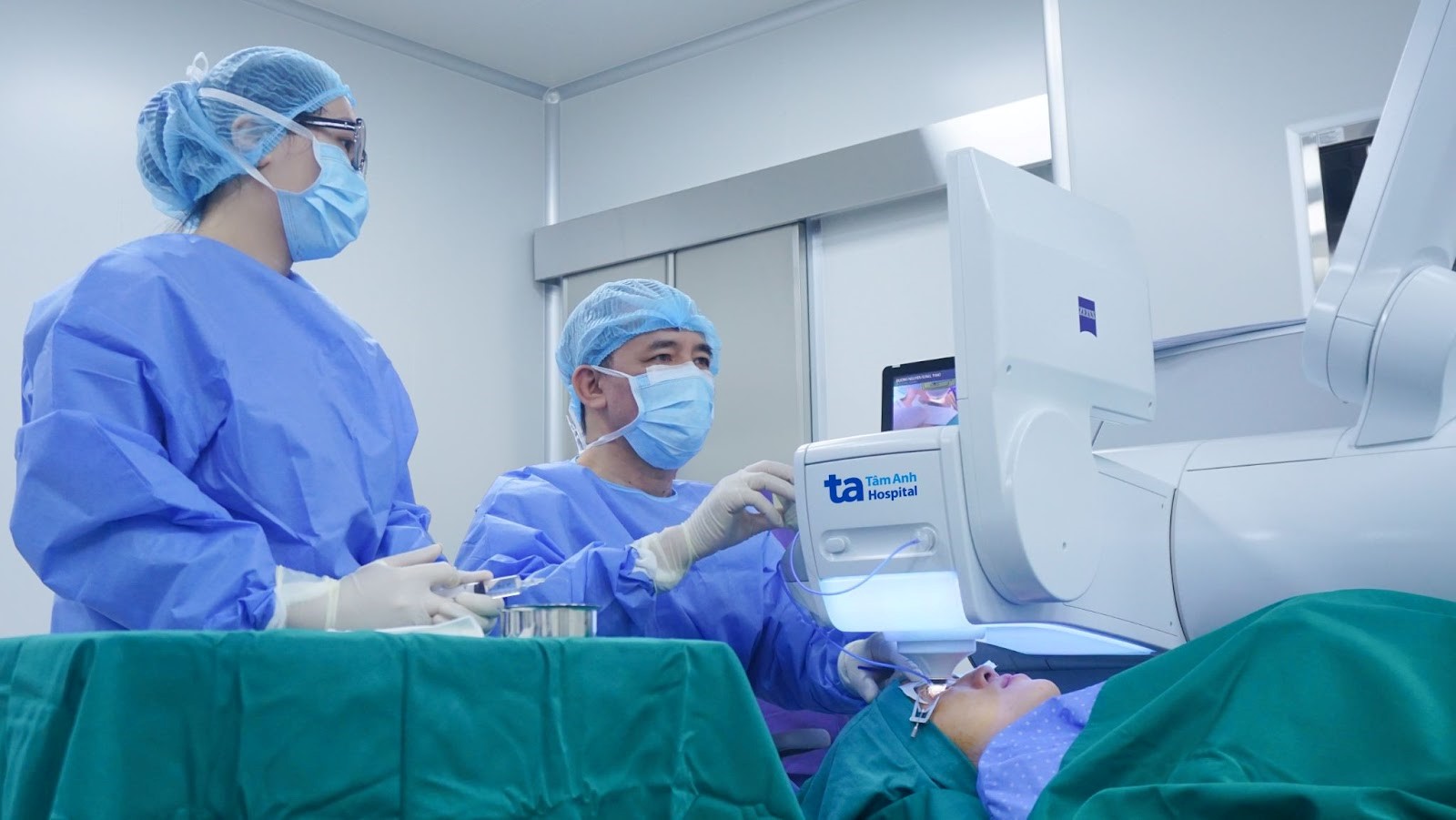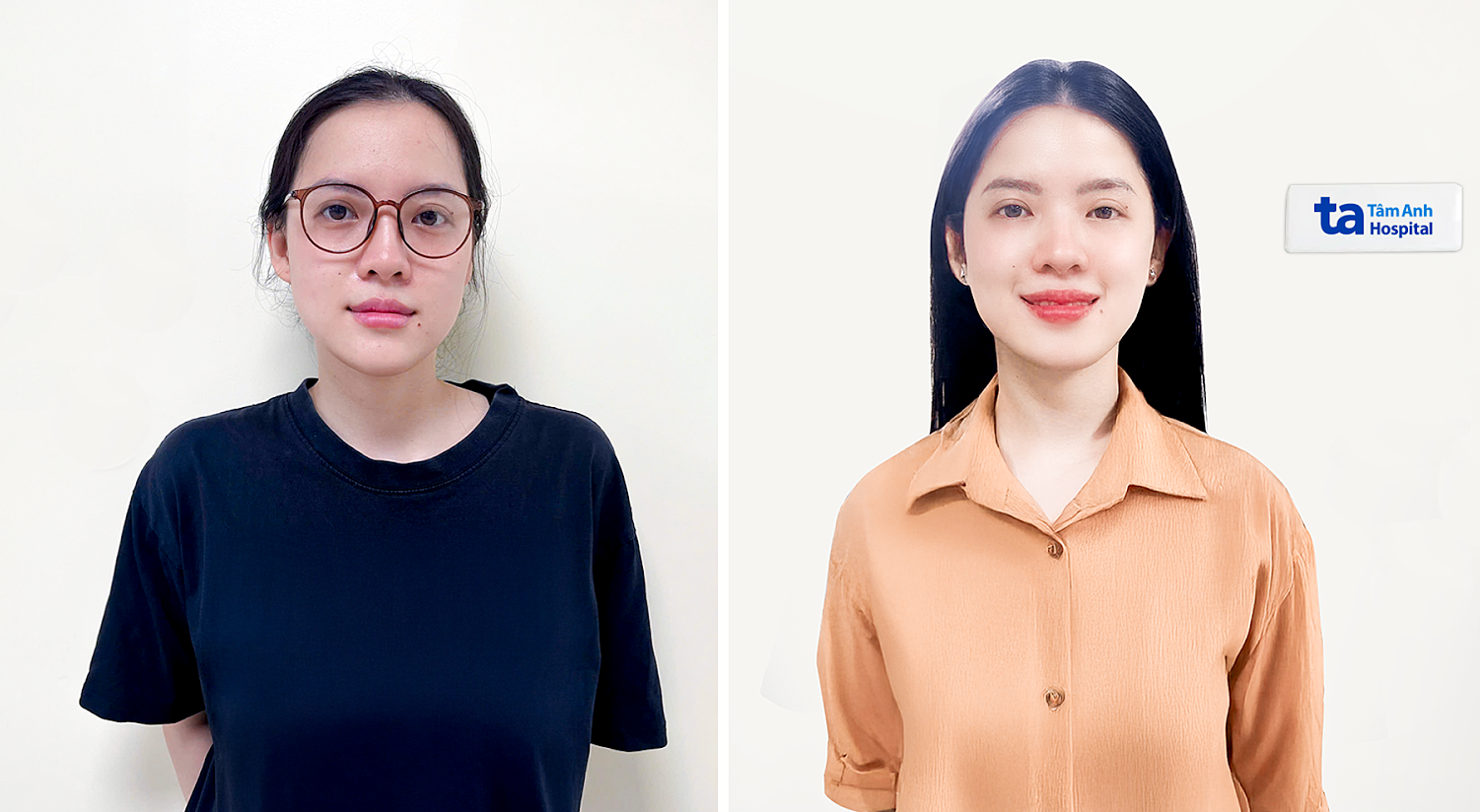Thao developed 2 diopters of myopia in each eye in 10th grade. Her vision gradually deteriorated, reaching 5.75 diopters in her left eye and 5.25 in her right eye by the time she graduated from university. Allergic to contact lenses, she relied almost exclusively on glasses, but the thick frames hindered her enjoyment of makeup.
Hoping to "change her appearance," Thao visited Tam Anh General Hospital in Ho Chi Minh City for a consultation about vision correction surgery. Doctor Dinh Trung Nghia, Deputy Director of the High-Tech Eye Center, measured her vision and confirmed her prescription had stabilized (not changing more than 0.5 diopters in a year). He then recommended comprehensive tests, including an eye ultrasound, corneal topography to assess the shape and thickness of her cornea, and biomechanical measurements to check its strength. According to Doctor Nghia, these assessments are crucial because higher degrees of myopia require removing more corneal tissue. The cornea must be sufficiently thick and strong to ensure safety during and after the procedure.
 |
Doctor Nghia examines Thao's eyes. Photo: *Tam Anh General Hospital* |
Thao also underwent a retinal examination to screen for serious conditions like glaucoma, macular degeneration, vitreous degeneration, and retinal detachment. A B-scan ultrasound assessed the risk of vitreous detachment, retinal tears, or hemorrhages—potential complications difficult to detect through routine examinations.
Doctor Nghia determined that Thao's cornea met the thickness standards, was structurally sound, and showed no abnormalities in the retina, optic nerve, or vitreous-retinal system, making her a suitable candidate for vision correction surgery. She opted for the advanced SMILE Pro technique, which doesn't require creating a corneal flap, allowing for smoother tissue removal and successful surgery. This method minimized post-operative swelling, dryness, the risk of regression, and promoted faster recovery.
Professor Nguyen Xuan Hiep, Director of the High-Tech Eye Center at Tam Anh General Hospital, used a femtosecond laser to cut and create a lens-shaped piece of tissue in 8-10 seconds per eye. He then made a small 2 mm incision to extract the tissue, reshaping the cornea and correcting the myopia without creating a flap. According to Professor Hiep, this method is safe for individuals with thin corneas or high myopia, up to 10 diopters, and astigmatism up to 5 diopters.
 |
Professor Hiep (right) performing Thao's surgery. Photo: *Tam Anh General Hospital* |
A week after her follow-up appointment, Thao's vision had recovered to 20/20, allowing her to return to work without experiencing dryness, fatigue, or pain.
 |
Thao before and after vision correction surgery. Photo: *Tam Anh General Hospital* |
After vision correction surgery, patients might experience some grittiness, tearing, or watery eyes for a few hours, but these symptoms gradually subside. Patients should wear protective glasses continuously for the first 24 hours, even while sleeping, to prevent rubbing and protect their eyes from dust. After one day, they can drive or fly, but should limit long-distance travel and always wear protective glasses outdoors to shield their eyes from bright light and dust.
Duc Tri
| Readers can submit questions about ophthalmology here for doctors to answer. |












